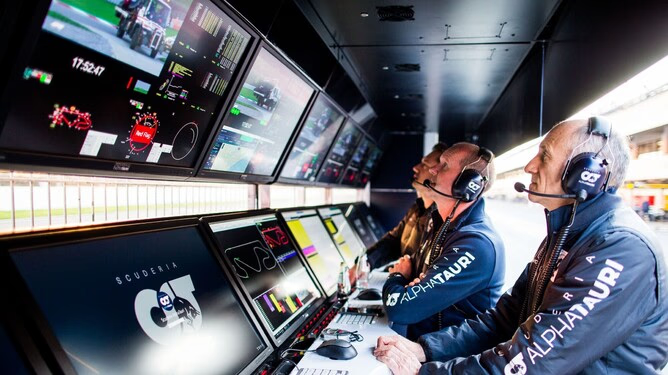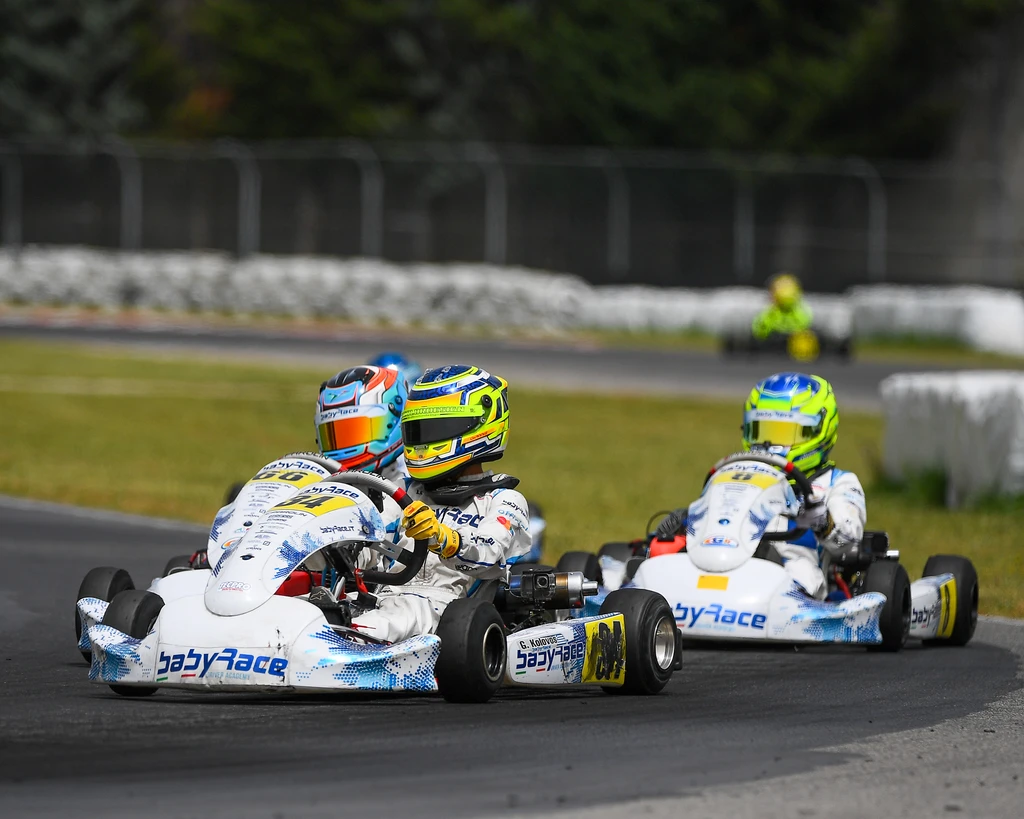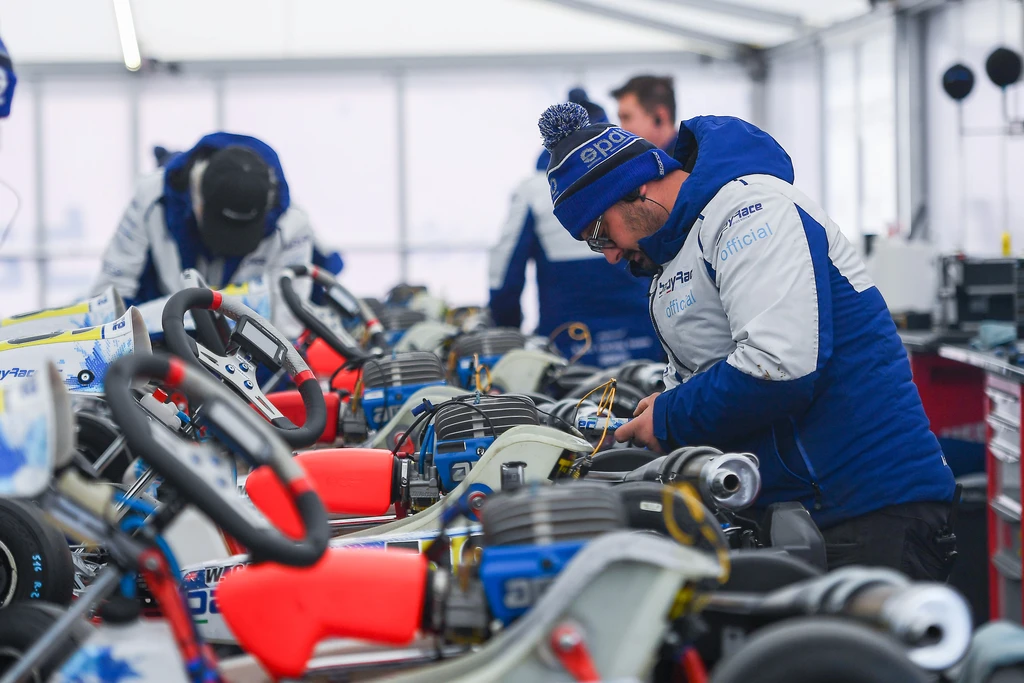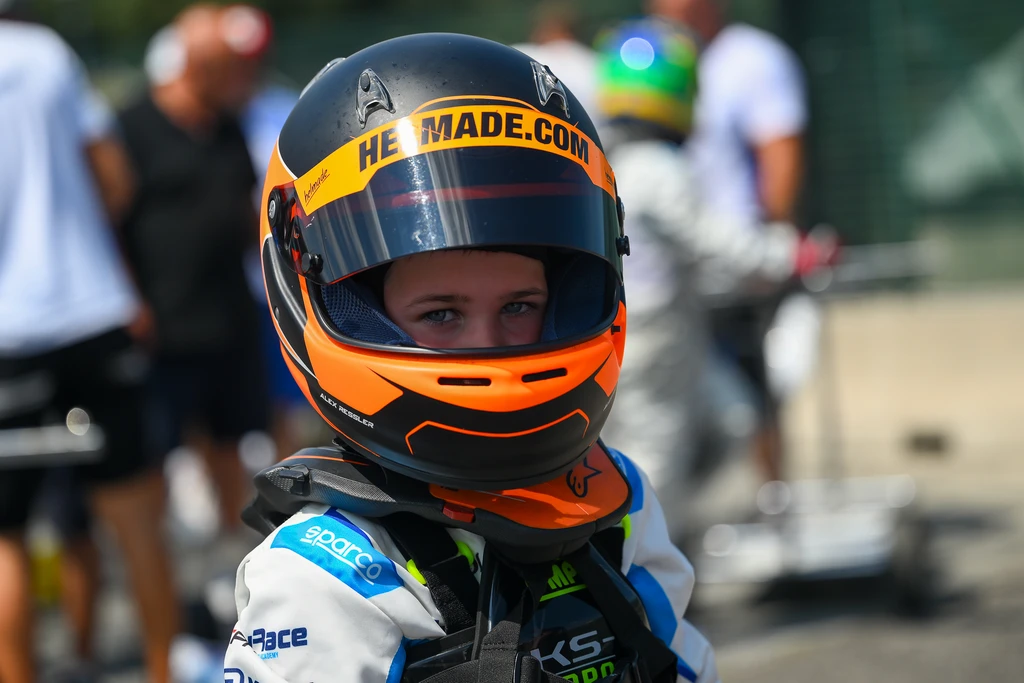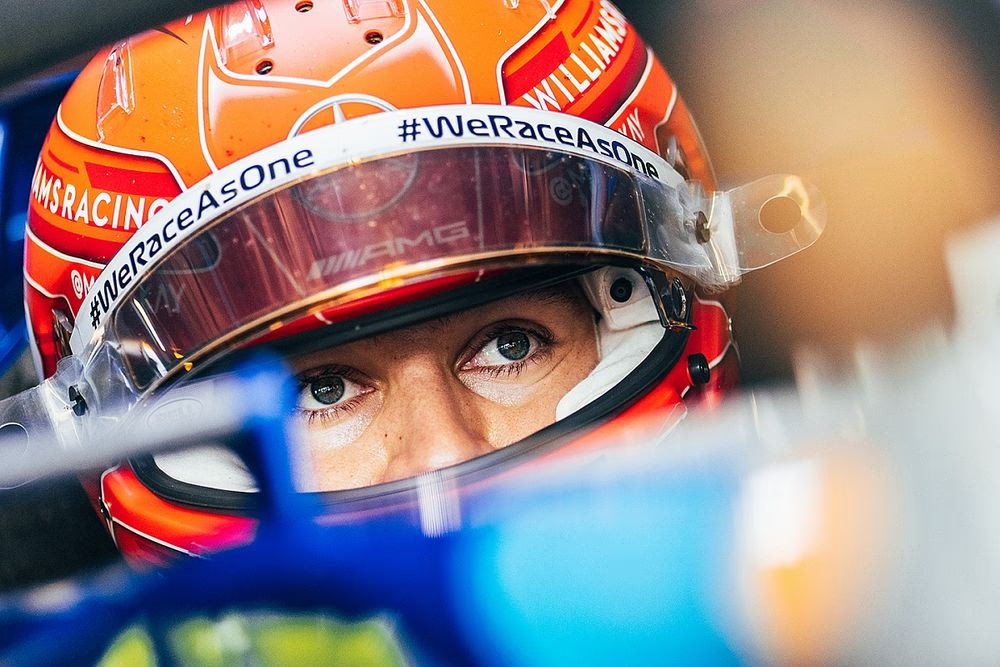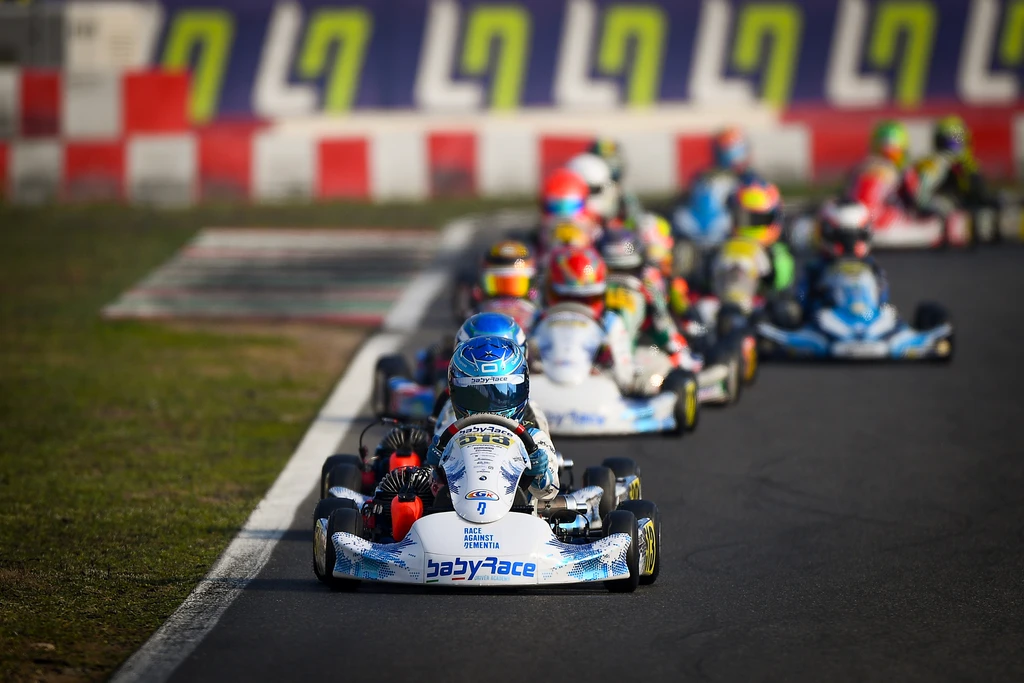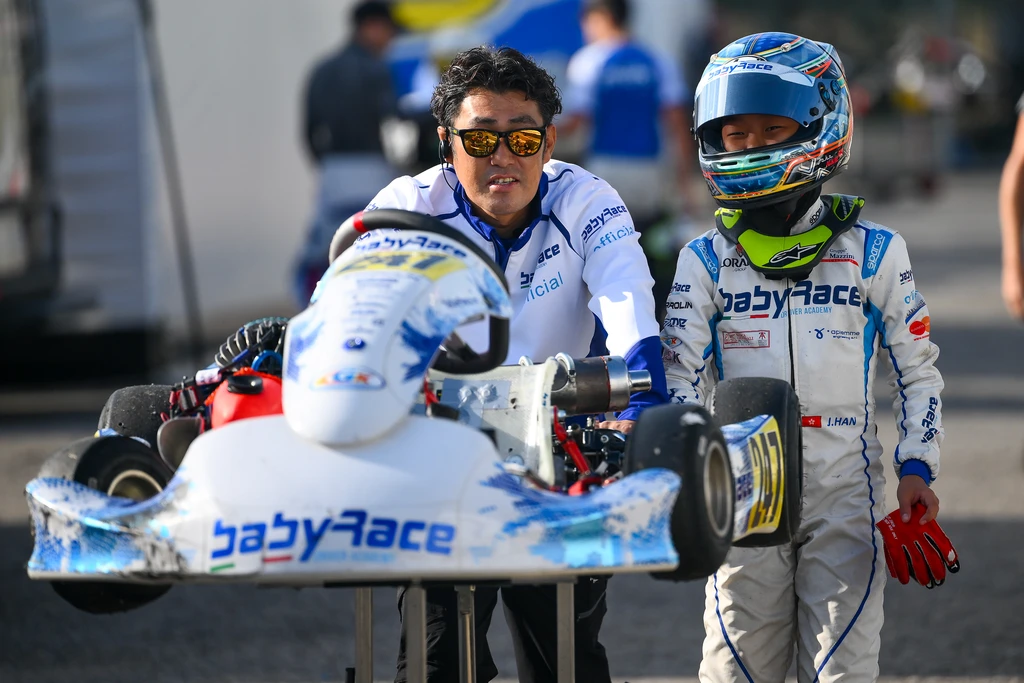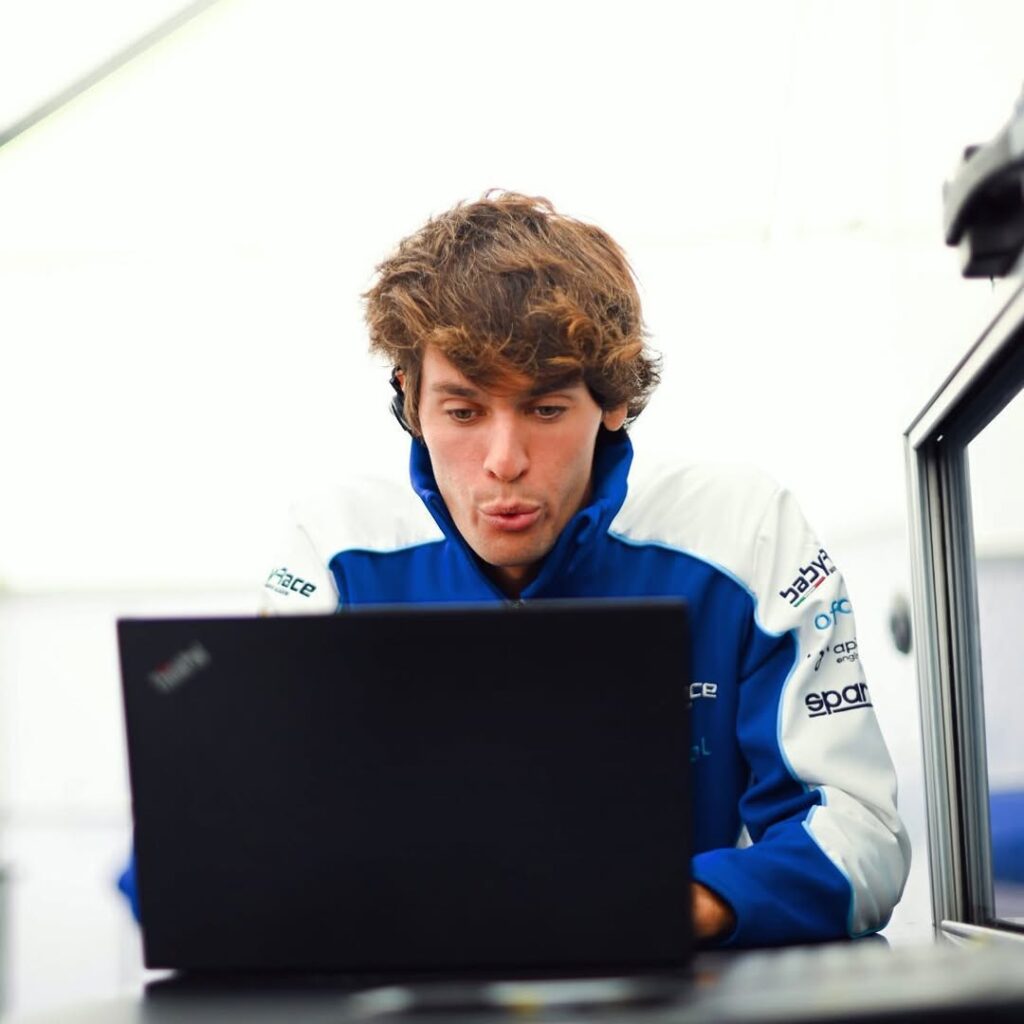
Back in the Day, We Were Guessing
When I started racing back in 2004, I was six years old.
And let me tell you: telemetry wasn’t really a thing yet.
We had a simple lap timer. Maybe a Micron, maybe an Alfano, or an Unipro… I don’t even remember exactly.
It just gave us lap times, sometimes RPMs. That was it. No GPS. No real analysis. Just raw numbers on a tiny screen.
Most of the time, we were just relying on opinions.
Mechanics, coaches, and team managers all had their theories:
- “You’re losing two tenths down the straight, so maybe change the sprocket.”
- “The carburation is off.”
- “The chassis is too grippy.”
But you never really knew. Was it the engine? The setup? Or maybe… just me as the driver?
We didn’t have the facts. We just guessed.
What Data Looks Like Today
Fast forward to now, and it’s a completely different world.
Today, telemetry shows you everything:
- Your braking points.
- Throttle application.
- Minimum corner speed.
- Exit speed.
- Even racing lines with accurate GPS overlays.
If you’re short-shifting, if you’re braking too early, if your line is messy — the data tells you instantly. No debate. No guessing.
That’s why I always tell my drivers: data doesn’t lie.
The Five Biggest Differences Between Then and Now
Here’s how I’d sum it up:
- Lap Timers → Full Telemetry
Back then, we only saw lap times. Now we see exactly where time is lost. - Opinions → Facts
Before, it was all about mechanics arguing. Now, you can prove everything with data. - Paper Track Maps → GPS Lines
I still remember coaches drawing racing lines on paper maps with a pen. Today, GPS shows you the exact line differences between two drivers. - Feel → Evidence
Before, you had to trust your own feeling. Now, you can confirm it with graphs. - Luxury → Standard
When I was a kid, even having a lap timer felt like a luxury. Today, telemetry is standard for any serious team.
A Personal Story: The Old-School Way
I still remember my mechanic telling me:
“You’re losing on the straight — must be the sprocket.”
So we changed it. Then we played with carburation. Then we tweaked the chassis. But honestly? Half the time, it didn’t fix the problem.
Maybe it was just my corner exit that was weak.
But we didn’t know.
Looking back, it’s funny. But at the time, it was frustrating. We were working blind.
Why Today’s Drivers Are “Spoiled”
And here’s the thing: drivers today don’t realize how easy they have it.
You finish a session, download the data, and instantly see where you’re losing. Side-by-side with your teammate, the truth is right there.
When I was young, we had to do our own “mental telemetry.”
Memorize corner by corner. Compare exits with your rivals. Try to piece it together by watching our competitors from the stands.
Honestly, that made us smarter in some ways. But it also made progress slower.
Now? No excuses. The tools are there.
Why You MUST Use Data
Here’s my take:
If you’re not using telemetry today, you’re giving away free lap time. For real.
Think about it:
- If your rival is analyzing data and you’re not, they’re already 1–0 up.
- If you both use it, it’s even.
- If neither of you do, it’s back to guesswork — but that’s rare these days.
That’s why top teams like Kart Republic, Ricky Flynn, Fusion, and yes — BabyRace Academy — all invest heavily in data guys. At our team, we have three-four people working on data alone, at the same race!
Because at this level, every tenth matters.
Final Thoughts: From Opinions to Facts
Racing has always been about speed.
But today, speed isn’t just built on instinct: it’s built on data.
Telemetry takes you from opinions to facts. From guessing to knowing.
So here’s my advice:
👉 Use the tools.
👉 Study the lines.
👉 Don’t just rely on your “feeling.”
Because the truth is simple: the driver who works with data will always have the edge over the one who doesn’t.
And in racing, that edge is everything.

